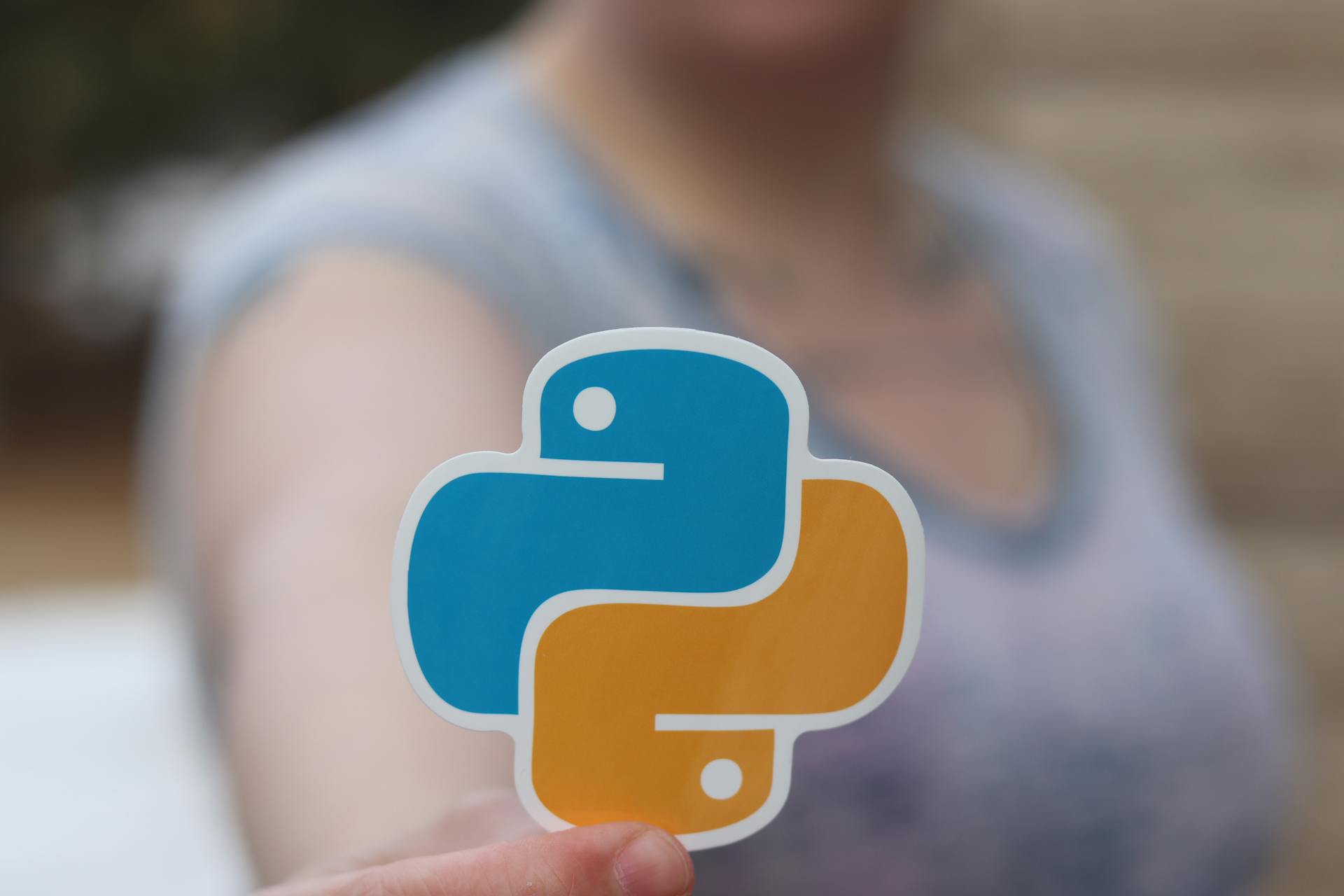
Binary classification is a fundamental concept in machine learning, and understanding its techniques and best practices is crucial for any data scientist or analyst. Binary classification is used to predict a binary outcome, such as 0 or 1, yes or no, or spam or not spam.
There are several binary classification techniques, including logistic regression, decision trees, and support vector machines. These techniques can be used for a wide range of applications, from medical diagnosis to credit risk assessment.
One of the most important best practices in binary classification is feature engineering, which involves selecting and transforming relevant features to improve model performance. This can include techniques such as normalization, feature scaling, and dimensionality reduction.
By following these best practices and using the right techniques, you can build accurate and reliable binary classification models that meet your business needs.
Broaden your view: What Is the Classification of Chatgpt within Generative Ai Models
Data Preparation
Data Preparation is a crucial step in binary classification, and it involves cleaning, transforming, and organizing raw data into a format suitable for training machine learning models.
Proper data preprocessing creates an accurate binary classification model by filling in missing values, removing outliers, or dealing with irrelevant features. This step ensures that the model learns from high-quality data, which increases its predictive power.
Feature engineering transforms raw data into features that the model can better understand and learn from. This could be through encoding categorical variables, creating interaction features, or using domain knowledge to create more meaningful features.
Understanding the dataset is crucial, as it allows you to grasp the nuances and intricacies of the data, which can help you make informed decisions throughout the machine learning pipeline.
Collection and Analytics
Data collection is a crucial step in the machine learning pipeline, and understanding the nuances of the data is essential for making informed decisions.
A well-structured dataset is a great starting point, and it's fortunate that the dataset used in this project is already well-organized.
The dataset contains thirteen input columns and one output column, which will contain the data as either 0 or 1.
Check this out: Random Shuffle Dataset Python Huggingface
The output column represents whether a person will get a heart attack (0) or be affected by a heart attack (1).
If you're collecting the dataset on your own, you'll need to perform data analytics and visualization independently to achieve better accuracy.
This involves analyzing the data to identify patterns and trends that can inform your machine learning model.
Preprocessing
Data preprocessing is a crucial step in the machine learning pipeline. It involves cleaning the data to fill in missing values, remove outliers, or deal with irrelevant features.
Proper data preprocessing increases the predictive power of a model by ensuring it learns from high-quality data. This step is essential for any machine learning project.
Feature engineering is another important aspect of data preprocessing. It involves transforming raw data into features that the model can better understand and learn from. This can be done through encoding categorical variables, creating interaction features, or using domain knowledge to create more meaningful features.
You might like: Pre Processing Data
Domain knowledge is essential for creating meaningful features that can significantly boost the model's performance.
Data collection and analytics are also critical steps in the machine learning pipeline. Understanding the dataset is crucial, and it can help you make informed decisions throughout the machine learning pipeline.
A well-structured dataset can make a big difference in the accuracy of the model. However, if you're collecting the dataset on your own, you'll need to perform data analytics and visualization independently to achieve better accuracy.
Most machine learning algorithms are designed to work with numerical data. They require input data to be in a numeric format for mathematical operations, optimization, and model training.
Normalization is a common technique used to scale numerical data. Min-Max Normalization is one such strategy that scales the features to a specific range, such as [0, 1].
We can use libraries like scikit-learn to perform normalization. The MinMaxScaler from scikit-learn can be used to scale the features to a specific range.
Normalization can be achieved using the Min-Max Scaling Formula, but we don't need to apply it manually. We can use libraries like scikit-learn to do this for us.
Related reading: Learn Binary Code
After fitting the scaler, we need to transform the dataset. This transformation typically scales the features to have a mean of 0 and a standard deviation of 1, or scales them to a specific range depending on the scaler used.
We can use the train_test_split function from scikit-learn to split the dataset into training and testing sets. This is a crucial step in the machine learning pipeline.
Splitting the dataset by 75% and 25% is a common approach, where 75% goes for training the model and 25% goes for testing the model.
Dealing with Imbalance
Data imbalance is a common challenge in machine learning, particularly in binary classification tasks where one class significantly outnumbers the other. This can lead to biased models that tend to minimize overall error by focusing on the majority class.
Properly dealing with imbalanced data is crucial to ensure your model learns from high-quality data and increases its predictive power. This involves strategies such as resampling, cost-sensitive learning, and using performance metrics less sensitive to class imbalance.
Resampling involves increasing the number of instances in the minority class by duplicating existing samples or generating synthetic samples. Techniques like SMOTE can help with this.
Oversampling can be done by duplicating existing samples, while undersampling reduces the number of instances in the majority class by randomly removing samples. Be cautious about information loss when using undersampling.
Algorithm-level solutions include cost-sensitive learning, which assigns different misclassification costs to different classes. Many algorithms in Scikit-learn support this.
Ensemble methods like Balanced Random Forests or EasyEnsemble can also be used to address class imbalance.
Data-level solutions involve collecting more data for the minority class if possible, creating new features or engineering existing ones to help the model distinguish between classes, or relying on evaluation metrics less sensitive to class imbalance.
Some of these metrics include precision, recall, F1-score, the area under the Precision-Recall curve (AUC-PR), or the Matthews correlation coefficient (MCC).
Intriguing read: Elements of Statistical Learning Solutions
Machine Learning Algorithms
Machine learning algorithms are the backbone of binary classification, and understanding their strengths and weaknesses is crucial for building robust models.
Logistic Regression is a straightforward and interpretable algorithm used for binary classification, and it's particularly useful for providing probability estimates.
Decision Trees are versatile and can be used for both classification and regression tasks, but they can be prone to overfitting if not properly tuned. Random Forest is an ensemble learning method that combines multiple decision trees to improve classification accuracy, making it a popular choice for many applications.
The top 5 algorithms for binary classification are Logistic Regression, Decision Trees, Random Forest, Support Vector Machines (SVM), and Neural Networks.
Here are the top 5 algorithms for binary classification:
Choosing a Strategy
Logistic Regression is a straightforward algorithm for binary classification, but it can struggle with imbalanced data.
Decision Trees are versatile and can handle various data types, making them a good choice for certain datasets.
Random Forest is robust to overfitting and can handle high-dimensional data, but it may not be the best option for small datasets.
Support Vector Machines are effective in high-dimensional spaces and can capture complex decision boundaries, but they can be computationally expensive.
Neural Networks are highly flexible and can capture complex relationships, but they require a large amount of data to train.
There is no one-size-fits-all solution for dealing with imbalanced data, and it's essential to experiment with different approaches to find the most effective strategy.
Resampling techniques, such as oversampling the minority class or undersampling the majority class, can help address class imbalance.
Algorithm-level adjustments, such as using class weights or modifying the loss function, can also be effective in certain situations.
Experimenting with different algorithms, such as Logistic Regression, Decision Trees, Random Forest, Support Vector Machines, and Neural Networks, can help you find the most effective strategy for your specific problem.
Expand your knowledge: Decision Tree Pruning
Logistic Regression
Logistic Regression is a straightforward and interpretable algorithm used for binary classification. It models the probability that a given input belongs to the positive class using a logistic function.
One of the strengths of Logistic Regression is its simplicity, making it easy to understand and implement. It's also very good at providing probability estimates, which can be useful in many real-world applications.
Logistic Regression is particularly well-suited for binary classification problems where the goal is to estimate probabilities of the positive class. This is because it can output a probability score between 0 and 1, indicating the likelihood of an instance belonging to the positive class.
Here are some key characteristics of Logistic Regression:
Overall, Logistic Regression is a powerful and widely-used algorithm for binary classification problems. Its simplicity and interpretability make it a great choice for many real-world applications.
Model Building and Evaluation
Building a machine learning model involves creating a computational representation of a problem or system that learns patterns, relationships, and associations from data. This model serves as a mathematical and algorithmic framework capable of making predictions, classifications, or decisions based on input data.
A simple sequential model with one input layer and one output layer is a good starting point, but it's essential to consider more complex datasets and machine learning tasks in real-world applications. In these cases, advanced data preprocessing, feature engineering, and multiple neural network layers may be necessary.
To evaluate the performance of a binary classification model, you can use metrics such as accuracy, precision, recall, F1 score, and ROC-AUC. These metrics provide insights into the correctness and reliability of the model's predictions, which are necessary for optimizing its performance or comparing it against other models.
Here are some common evaluation metrics for binary classification:
- Accuracy: the proportion of true results (both true positives and true negatives) in the data.
- Precision: the accuracy of positive predictions made by the model.
- Recall: the model's ability to find all the positive instances.
- F1 Score: the harmonic mean of precision and recall.
- ROC-AUC: the Area Under the Curve metric from the Receiver Operating Characteristic curve.
Building a Model
Building a model is a crucial step in the machine learning process. It's a computational representation of a problem or system that learns patterns, relationships, and associations from data.
A model serves as a mathematical and algorithmic framework capable of making predictions, classifications, or decisions based on input data. It encapsulates the knowledge extracted from data, allowing it to generalize and make informed responses to new, previously unseen data.
To build a simple sequential model, you need to define the architecture, including the number of layers and the type of activation functions used. You can use a library like TensorFlow or PyTorch to build the model.
Here are the essential steps to build a model:
- Data Preparation: Preparing and preprocessing data is essential before training a model.
- Model Training: Training involves feeding the feature variables and corresponding labels into an algorithm.
- Model Evaluation: Evaluating your model's performance is important using metrics like accuracy, precision, recall, and F1 score.
Remember, a good model is only as good as the data it's trained on. Make sure to handle missing values, encode categorical variables, and scale numerical features properly.
Prediction and Evaluation
Prediction and evaluation are two crucial steps in the model building process. The predict method is used to generate predictions from the model based on the input data, and the output will contain the model's predictions for each data point in the training dataset.
For accurate predictions, it's essential to use a validation dataset, which is a part of the dataset set aside for testing the model's performance. However, if you only have a minimal dataset, you can use the test dataset for prediction, as mentioned in the article.
Additional reading: Elements to Statistical Learning
To evaluate the performance of a model, you need to use appropriate evaluation metrics that measure its effectiveness in making predictions. One commonly used tool for evaluating classification models is the confusion matrix, which provides a detailed understanding of the model's performance.
Here are some key evaluation metrics for binary classification models:
These metrics provide insights into the correctness and reliability of the model's predictions, which are necessary for optimizing its performance or comparing it against other models.
Hyperparameter Tuning and Optimization Techniques
Hyperparameter tuning is crucial in binary classification to achieve optimal performance. It involves adjusting settings not learned from the data but set prior to training, such as learning rates, regularization strength, and tree depth.
Techniques like grid or random search can help you systematically explore hyperparameter combinations to find the best configuration. This process is essential in optimizing the selected model's performance.
Common hyperparameters include learning rates, regularization strength, and tree depth (for decision trees and random forests). These parameters have a significant impact on the model's performance.
If this caught your attention, see: Ball Tree
Model selection is a critical step in binary classification, and it involves choosing an algorithm well-suited to your data, problem domain, and available resources. By considering these factors, you can build a robust binary classification model.
Optimization techniques, such as gradient descent, Newton's method, and conjugate gradient, are used to iteratively adjust model parameters to minimize the chosen loss function. These techniques can impact the convergence speed and stability of the training process.
Gradient descent is a fundamental optimization technique that minimizes the loss function by iteratively adjusting model parameters toward the steepest descent. Variants of gradient descent, including stochastic gradient descent (SGD), mini-batch gradient descent, and Adam, adaptively adjust learning rates.
Newton’s method is an optimization technique that uses second-order derivatives (Hessian matrix) to find the optimal parameter values. It's suitable for convex optimization problems but may be computationally expensive.
The choice of an optimization algorithm can significantly impact the performance of your model. Experimentation and tuning of hyperparameters related to optimization are often necessary to achieve optimal results.
Consider reading: Applied Machine Learning Explainability Techniques
Model Evaluation Metrics
Model evaluation metrics are crucial for assessing the performance of a binary classification model. They provide insights into the correctness and reliability of the model's predictions, which are necessary for optimizing its performance or comparing it against other models.
Accuracy is the most straightforward metric, calculating the proportion of true results (both true positives and true negatives) in the data. Despite its simplicity, accuracy alone can be misleading, especially in imbalanced data sets.
Precision measures the accuracy of positive predictions made by the model, showing how many of the predicted positive instances are truly positive. Recall gauges the model's ability to find all the positive instances, measuring the proportion of actual positives correctly identified.
The F1 score is the harmonic mean of precision and recall, serving as a balanced measure when the cost of false positives and false negatives are very different. It ranges between 0 and 1, with 1 indicating perfect precision and recall.
Here are some common evaluation metrics for binary classification:
- Accuracy
- Precision
- Recall
- F1 Score
- ROC-AUC (Receiver Operating Characteristic – Area Under the Curve)
- Confusion Matrix
These metrics help you judge how well the model separates the data into the two categories it's trained for, ensuring it delivers reliable results.
Real-World Applications
Binary classification models are used in various real-world applications, including sentiment analysis, fraud detection, disease diagnosis, and customer churn prediction.
These models have practical applications that shape various industries and business decisions, enabling us to predict binary outcomes that are particularly useful in scenarios where the outcomes are of significant importance.
Fraud detection is one of the most common binary classification applications, used in banking and finance to predict whether a financial transaction is legitimate or fraudulent based on a set of input variables.
Businesses use binary classification models to predict customer churn, identifying whether a customer is likely to stop using their services or products by considering factors such as usage pattern, spending behavior, and engagement with the business.
In marketing and sales, binary classification models perform conversion prediction, predicting whether a prospect or a lead is likely to make a purchase based on their interaction with the business.
These models are the backbone of many intelligent systems, analyzing data to categorize information into two groups and enabling data-driven decisions, personalized experiences, and operational efficiency.
A different take: Unsupervised Anomaly Detection
Frequently Asked Questions
What is binary classification with an example?
Binary classification is a predictive model that identifies a binary outcome, such as a yes or no, true or false, or positive or negative result. For example, predicting whether a customer will buy a product or not.
What is a binary classification problem?
A binary classification problem is a type of problem where instances are categorized into one of two distinct classes, often represented as 0 and 1. This binary outcome is used to predict a specific result, such as yes/no or true/false.
What is standard binary classification?
Binary classification is a task where data is categorized into two distinct groups, typically labeled as "positives" or "negatives". This type of classification helps identify which elements belong to one group or the other.
Is SVM a binary classifier?
Yes, SVM is a binary classifier that categorizes new examples into one of two predefined groups. It's a powerful tool for distinguishing between two classes, but how it works is a fascinating story.
Sources
- https://www.javatpoint.com/classification-algorithm-in-machine-learning
- https://www.freecodecamp.org/news/binary-classification-made-simple-with-tensorflow/
- https://spotintelligence.com/2023/10/09/binary-classification/
- https://graphite-note.com/binary-classification-model-in-ml/
- https://www.pecan.ai/blog/mastering-binary-classification-model-predictive-analytics/
Featured Images: pexels.com


